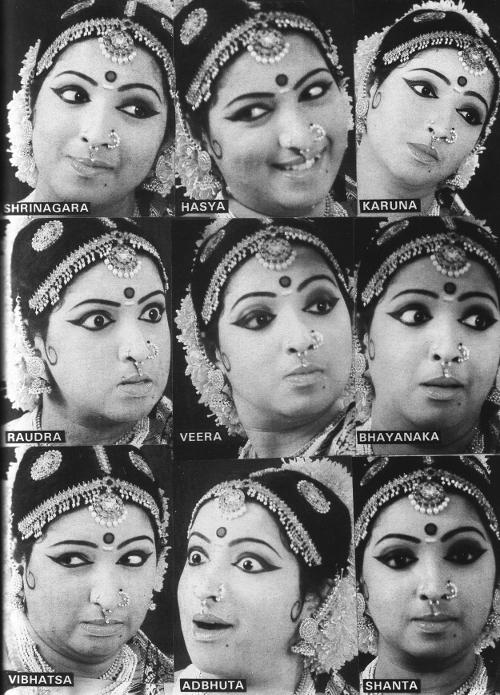Face expressions
The quintessence of Indian dance is the expression. The expression is in the arms, the legs, the hands, in every part of the body, from head to toe. Costume and decors are also involved in the expression.
The dancer's face is the center of the expression. The whole body can also be regarded as an extension of the face. The dancer's face turns into a mobile mask, divided into several parts, each one independently controlled. There are many possible movement combinations of the face. All movements and their combinations are highly codified, making the face expression more powerful.
Eyes are the center of the facial expression, showing that the dancer is possessed by the character that she/he interprets. The very eyes of a truly good dancer reflect the whole dance. Body and eyes are the external and internal manifestations of the same expression and must be mutually matched so that the dance could be consistent. Without the eyes, the dance would be irrelevant. This expressive character of the eyes makes the Indian dance look Indian.
Rasa means "emotion" and bhava means "state of mind".
The Navarasas (9 emotions) or 9 Bhavas (states of mind) are: Shrinagara (love), Hasya (humorous), Karuna (tragic), Raudra (fierce), Veera (Heroic), Bhayanaka (fearful), Vibhatsa ( disgusted), Adbhuta (amazed) and Shanta (peaceful).
Last edited: 05/07/2021























